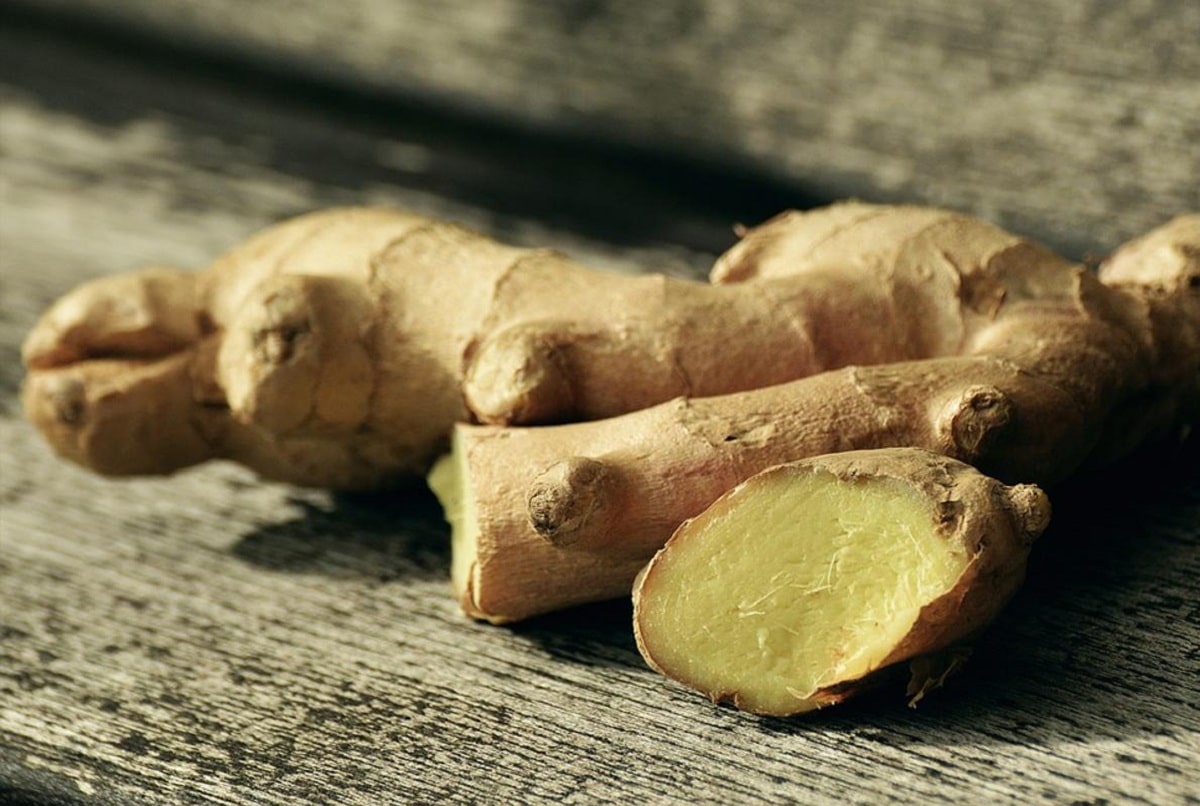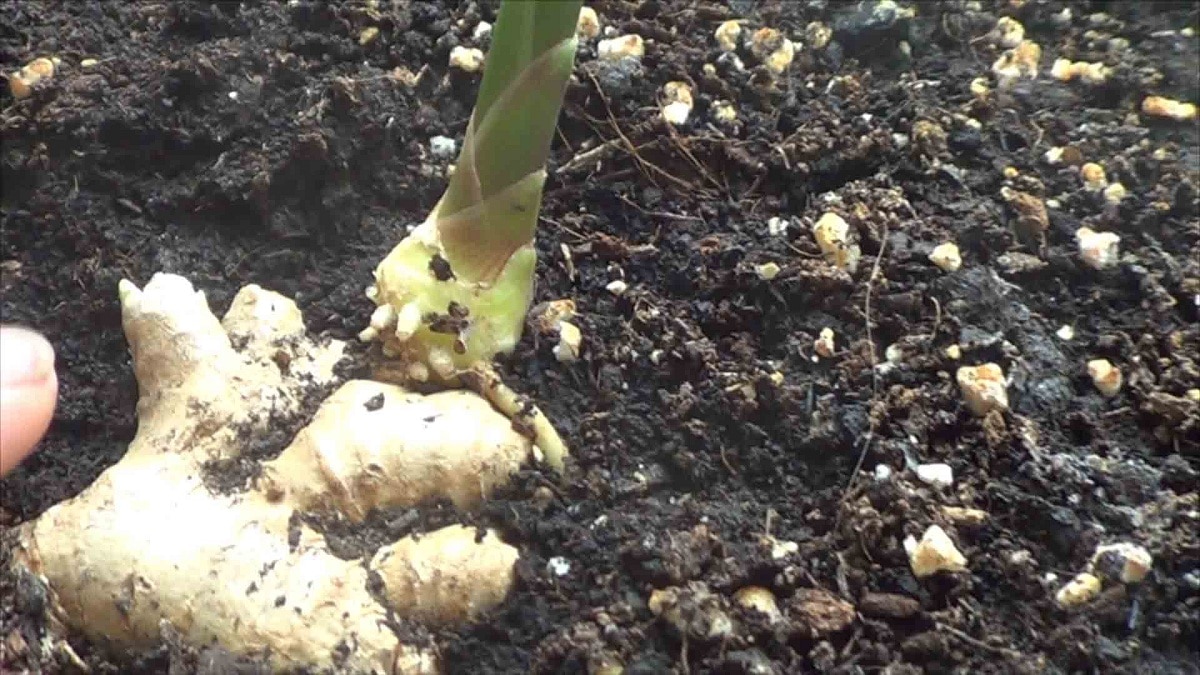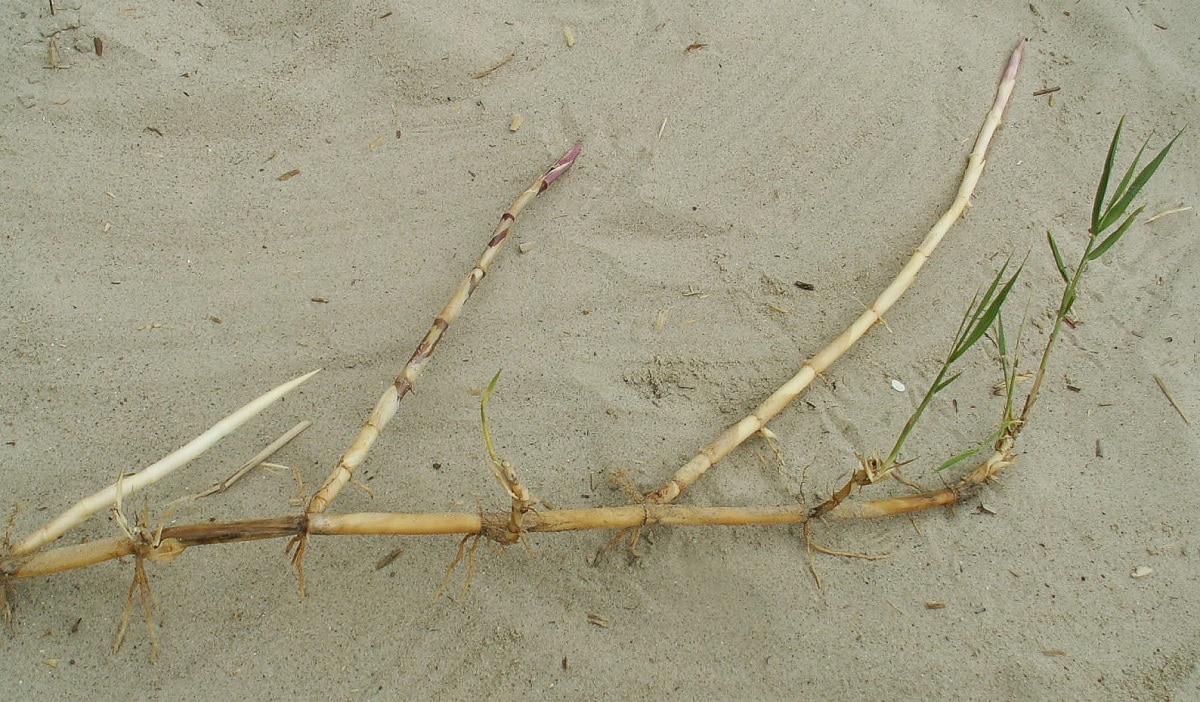
In biology, a rhizome is an underground stem with multiple shoots. These stems grow horizontally, giving off grassy roots and shoots at their various nodes. The rhizomes spread indefinitely. Over time, the oldest parts die off, but new shoots cover a large area every year. They create thickened branches with short nodes. There are innumerable examples of rhizomes which can help us to better understand all this.
For this reason, in this article we are going to tell you about the main examples of rhizomes and their main characteristics.
Examples of rhizomes and their characteristics

Rhizomes are considered underground stems along with bulbs, tubers, and rhizomes. Underground stems store nutrients in their stems, so they also serve as reserve organs when harsh seasons like winter begin.
According to their growth and branching, rhizomes can be classified as coaxial or uniaxial. Sympodial rhizomes are those in which each part corresponds to the development of a continuous axillary bud. An example of such a rhizome is Sansevieria and Poaceae.
In the case of a monopodial rhizome, our terminal buds continue to grow indefinitely as a rhizome. Axillary buds produce new shoots. In general, is an invasive plant or weed. The rhizome is a vegetative reproduction system common to many plants such as lilies and ginger.
The rhizomes can be divided into pieces containing buds and can be grown individually. Rooted plants are perennials that lose their aerial parts in cooler climates, but survive underground because their rhizomes store nutrients for the following spring.
Some plants with underground rhizomes include ginger, hops, and turmeric, which are known for their medicinal properties, as well as the weeds aleppo sorghum or johnson grass, bermudagrass and coquito or cypero.
Some plants have rhizomes that grow above the soil surface, such as some lilies and ferns, whose swollen stems are rhizomes. There, the rhizome is a descriptive model in which the organization of the elements does not follow a line of hierarchical subordination, that is, It has a base or root that gives rise to multiple ramifications, and any element that intervenes is capable of influencing the others.
Functionality of the rhizomes

The main function of the rhizomes is to store nutrients, including carbohydrates and proteins, until the plant needs them to produce new shoots or to survive the winter in a process called vegetative reproduction.
The farmers they use asexual reproduction to laterally propagate plants such as hops, ginger, and several species of grasses. Some rhizomes are also edible or used as a condiment, such as ginger and turmeric.
Rhizomes are a vegetative reproductive system common to many plants, such as splendens, canna, calla, lily, and ginger. The rhizomes can be divided into blocks containing at least one bud each and can be planted individually. Rhizomes can be divided into two different types based on the type of branch they exist on.
In rhizomes, propagation is achieved by cutting or dividing the rhizome into sections, each with the ability to produce new shoots. Since the rhizomes store a large amount of nutrients and they are prone to adventitious roots, it is not difficult to produce new plants.
Each part removed for propagation usually consists of several internodes and must have a vegetative bud or meristem. Generally, the rhizome parts can be transplanted directly to the desired location.
Leaves should be cut back when transplanting. The rhizomes divide before the growing season ends or begins, that is, in late summer, fall, or early spring. If divided in early summer, the rhizome parts will form roots and become established before winter.
examples of rhizomes

Plants that reproduce by rhizomes are perennials, which include:
Ginger
It is one of the most popular root plants of the ginger family due to its many uses and properties.
Grass or white grass
The grass has thin rhizomes.
Cane from the Indies
It is a tropical plant, and despite having rhizomes that facilitate its development and growth, its maintenance and conservation requires a lot of attention and care.
Menta
Mint is one of the most valuable plants for its unique properties, smell and taste, it has rhizomes like ginger.
Lirio
Lilies are root plants with thick, leafy stems that allow them to survive extreme temperatures and harsh winters.
Seal of solomon
It is characterized by the presence of tubular white flowers. Its growth and development requires a large amount of nutrients, so the presence of rhizomes favors its absorption, storage and processing.
Bamboo
All bamboos reproduce by rhizomes and are especially of great interest in gardening to create barriers in our homes that provide us with separation, protection or greater privacy.
Difference Between Rhizoid and Root
A rhizome is a root-like structure that exists at the base of algae and serves to hold the substrate in place. Unlike the root does not serve as the main organ for capturing water or nutrients. Importantly, rhizomes are thread-like cellular structures present in the sporophytes of some algae, gametophytes, and lower vascular plants.
The roots are plant organs, generally underground, without leaves, with functions of absorption, fixation and storage; rhizomes are structures related to the roots found in plants. Rhizomes are found in fungi, bryophytes, and ferns.
The vegetative bodies of fungi and bryophytes are indistinguishable in terms of roots, stems, and leaves. The shape and function of the rhizome depends on the species and the type of substrate. The rhizomes of organisms that live in muddy substrates often have complex branching.
By contrast, the rhizomes of organisms that live on sandy substrates are bulbous and very flexible, such as those of sea pens, which can insert their entire body into the substrate when the rhizomes shrink.
I hope that with this information you can learn more about the main examples of rhizomes that exist and their characteristics.